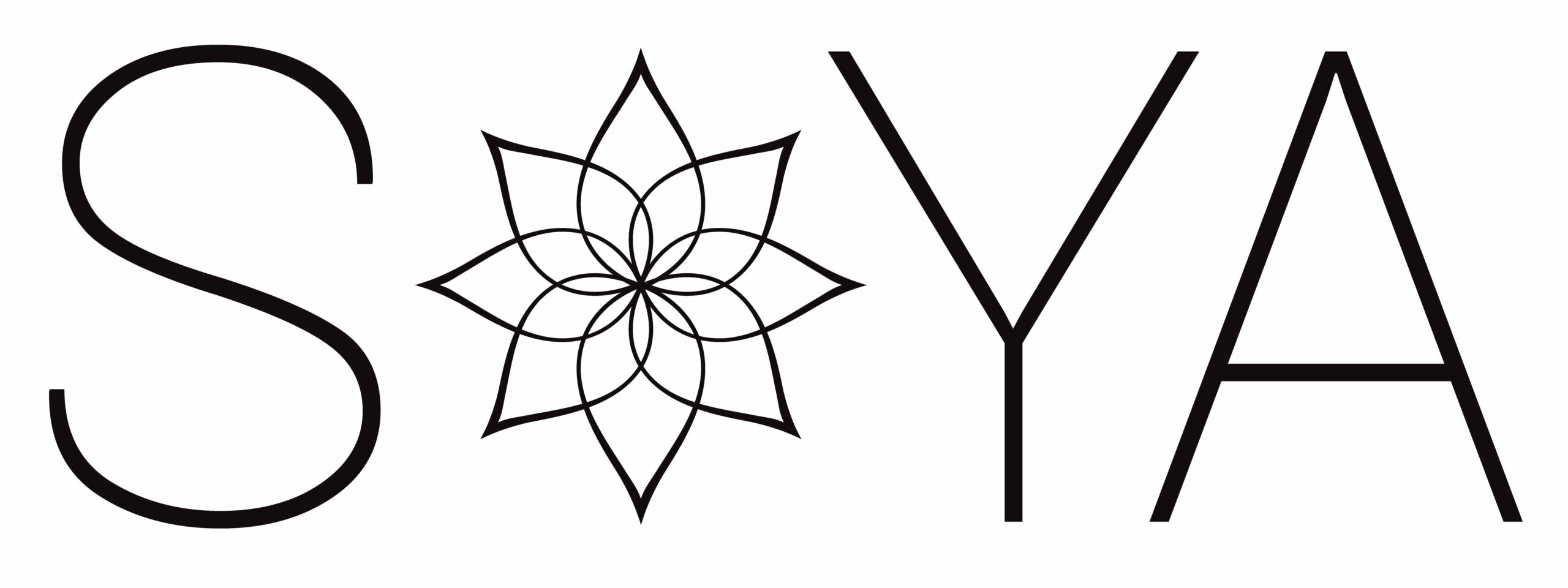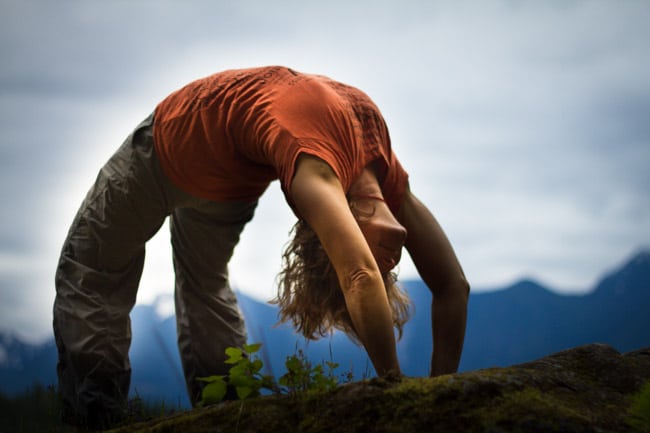The 6 Kinds of Yoga Asanas for Balancing the Body
By Mugs McConnell, SOYA, E-RYT500
The Hatha Yoga Pradipika tells us there are 8,400,000 different Yoga poses due to so many ways to modify and deepen the asanas. This wonderful science of Yoga, born from the forests and caves of the Himalayas, is rich with healthy benefits for the practitioner. Swami Sivananda says,
“We do not practice yoga asanas in order to gain big muscles. Muscles do not necessarily mean health. The practice of Yoga asanas is to achieve the healthy and harmonious functioning of the endocrine glands and the internal viscera, the nervous system and the mind. This is what the regular practice of Yoga Asanas and Pranayama will bestow upon you.”
Each style of hatha yoga has a system or methodical approach to the asanas. The masters have designed these systems with a purpose to succeed. A common denominator to the practice of hatha yoga is that there are six kinds of poses one should incorporate to achieve the balance and health of the body. These poses are:
Side bend, Forward bend, Backbend, Twist, Inverted, Balance
By incorporating these six kinds of poses into each yoga session one will ensure optimum stimulation of the endocrine glands, nervous system, muscular system, and respiratory system, while including weight-bearing exercise for healthy, strong bones.
The 8,400,000 different asanas provide variety and the opportunity to continuously advance in your ability. These asanas will all fall within these 6 kinds of poses. The order in which one should do these poses will vary throughout the different hatha yoga styles. Below is one example of how to sequence the asanas together.
 Side Bends give a lateral stretch to the spine. They stretch the hips and waist and keep the spine supple and healthy. The muscles in the trunk of the body are contracted, relaxed and stretched. Arms and legs are stretched and the chest is expanded. Pelvic organs are toned. The spinal nerves are thoroughly toned. (The spine is of the greatest importance to a yogi, as it is connected with the spinal cord, the sympathetic nervous system, and kundalini energy.)
Side Bends give a lateral stretch to the spine. They stretch the hips and waist and keep the spine supple and healthy. The muscles in the trunk of the body are contracted, relaxed and stretched. Arms and legs are stretched and the chest is expanded. Pelvic organs are toned. The spinal nerves are thoroughly toned. (The spine is of the greatest importance to a yogi, as it is connected with the spinal cord, the sympathetic nervous system, and kundalini energy.)
 Forward Bends often follow side bends, giving a counter-stretch to the hips and the lateral muscles of the spine. The hamstrings are stretched, which is essential to accomplish many of the advanced yoga asanas. The spine and back muscles are stretched and extended. The abdominal muscles are contracted, while the pelvic organs are massaged. The forward fold in the body squeezes and cleanses the internal organs of the body. The liver and spleen are stimulated. Forward bends are generally poses that quieten the emotions, and are considered excellent for an introverted mood.
Forward Bends often follow side bends, giving a counter-stretch to the hips and the lateral muscles of the spine. The hamstrings are stretched, which is essential to accomplish many of the advanced yoga asanas. The spine and back muscles are stretched and extended. The abdominal muscles are contracted, while the pelvic organs are massaged. The forward fold in the body squeezes and cleanses the internal organs of the body. The liver and spleen are stimulated. Forward bends are generally poses that quieten the emotions, and are considered excellent for an introverted mood.
 Back Bends offer a counter stretch to forward bends, to balance the lengthening of the opposite set of muscles. Muscles in the front of the torso are lengthened. Back bends tone the deep and superficial muscles of the back, giving them an effective massage. Often these poses can relieve back pain due to overwork. The ovaries and uterus are toned, while digestion is energized. Some back bends lengthen the quadriceps in the thighs, balancing the stretch to the hamstrings achieved in forward bends.
Back Bends offer a counter stretch to forward bends, to balance the lengthening of the opposite set of muscles. Muscles in the front of the torso are lengthened. Back bends tone the deep and superficial muscles of the back, giving them an effective massage. Often these poses can relieve back pain due to overwork. The ovaries and uterus are toned, while digestion is energized. Some back bends lengthen the quadriceps in the thighs, balancing the stretch to the hamstrings achieved in forward bends.
Depending on the system of yoga, some classes have forwards bends after backbends, and some have backbends before forward bends.
 Twists offer relief to the back after backbends. Again, we achieve a lateral stretch to the spinal column, keeping it elastic and toning the spinal nerves. Stiffness of the back, neck and shoulders are relieved. The abdominal organs receive a good massage, while the waist is trimmed. Often spinal discrepancies are aided. The abdominal viscera are massaged. Twists squeeze and nourish the nerves and muscles along the spinal column. Constipation and dyspepsia are aided. The pancreas, spleen, liver and kidneys are affected.
Twists offer relief to the back after backbends. Again, we achieve a lateral stretch to the spinal column, keeping it elastic and toning the spinal nerves. Stiffness of the back, neck and shoulders are relieved. The abdominal organs receive a good massage, while the waist is trimmed. Often spinal discrepancies are aided. The abdominal viscera are massaged. Twists squeeze and nourish the nerves and muscles along the spinal column. Constipation and dyspepsia are aided. The pancreas, spleen, liver and kidneys are affected.
 Inverted poses are considered invaluable. Turning the body upside down, countering the force of gravity, can result in many benefits. The heart does not have to exert itself so it can pump more slowly. Memory is improved. Neck and lungs are flushed and cleansed. Tonsils and ears receive nourishment from the increased circulation. Varicose veins and tired, aching legs are relieved of pressure. Hemorrhoids and the
Inverted poses are considered invaluable. Turning the body upside down, countering the force of gravity, can result in many benefits. The heart does not have to exert itself so it can pump more slowly. Memory is improved. Neck and lungs are flushed and cleansed. Tonsils and ears receive nourishment from the increased circulation. Varicose veins and tired, aching legs are relieved of pressure. Hemorrhoids and the  abdominal organs are relieved of excess pressure. The facial tissues are nourished and cleansed. Shoulderstand massages the thyroid gland. Headstand nourishes the thyroid, parathyroid and pituitary glands. An even more subtle benefit is, we get a new perspective of things when we get upside down, which can help on get “unstuck” with their attitude.
abdominal organs are relieved of excess pressure. The facial tissues are nourished and cleansed. Shoulderstand massages the thyroid gland. Headstand nourishes the thyroid, parathyroid and pituitary glands. An even more subtle benefit is, we get a new perspective of things when we get upside down, which can help on get “unstuck” with their attitude.
![]() Balance poses work with strength as well as our ability to focus the mind. One develops harmony, balance and poise. The breathing is slowed down, which gives relief from nervous tension. Equilibrium of mind automatically occurs as one deepens their focus. Balance poses can helpful near the beginning of an asana session to enhance the mind-body connection, assisting one to “let go” of outer concerns. They are also helpful at the end of a session, bringing one from a physical focus into the mind, preparing for the quiet of Savasana (relaxation) or meditation.
Balance poses work with strength as well as our ability to focus the mind. One develops harmony, balance and poise. The breathing is slowed down, which gives relief from nervous tension. Equilibrium of mind automatically occurs as one deepens their focus. Balance poses can helpful near the beginning of an asana session to enhance the mind-body connection, assisting one to “let go” of outer concerns. They are also helpful at the end of a session, bringing one from a physical focus into the mind, preparing for the quiet of Savasana (relaxation) or meditation.
Beyond these six categories you have asanas, poses can be standing, kneeling, seated, and supine or prone laying down. These all give variety which strengthens and lengthens the body in numerous ways, so it is important to work with all these options. The next time you plan your asana class or your home practice, be sure to consider these six kinds of poses and include them all in every class, as well as the variations of standing, kneeling, etc.
Remember: Always work within your own capacity. Never move into pain. Enjoy the pose and listen to your body. This is your greatest protection for preventing injury.
Certain systems of yoga have a specific order in which to do poses. Since Yoga is a science, you can be sure there is good reason for the order of sequencing, so honour the work that the past masters have done and give their sequencing order a try for a while. As you develop an awareness of your body, you will soon find the most suitable system for you.
Celebrating over 25 years of Teacher Training


Recent Comments